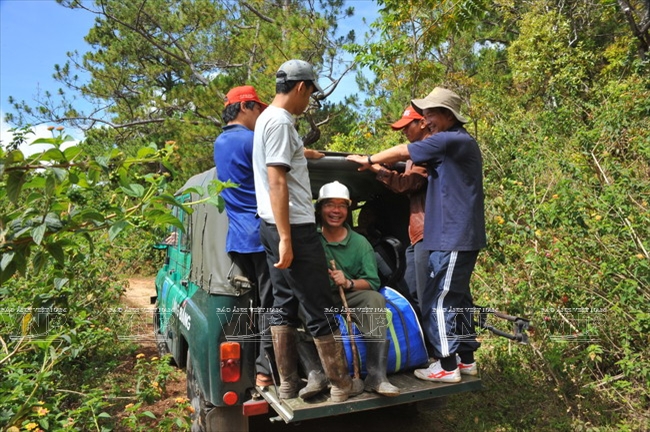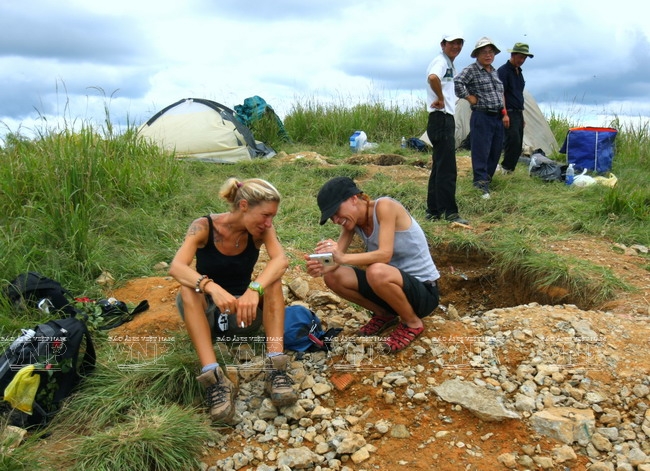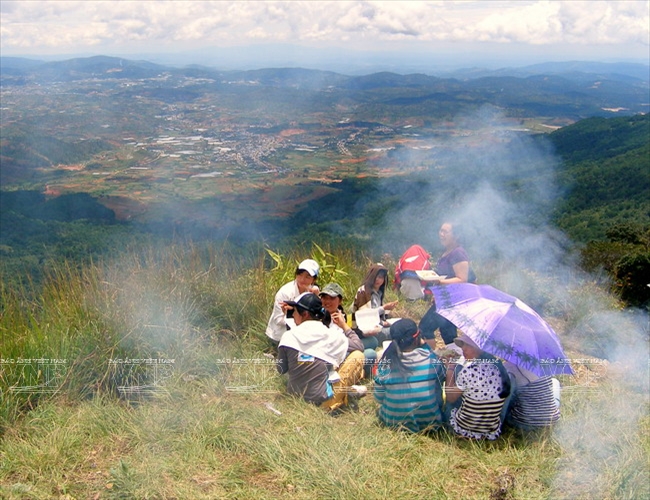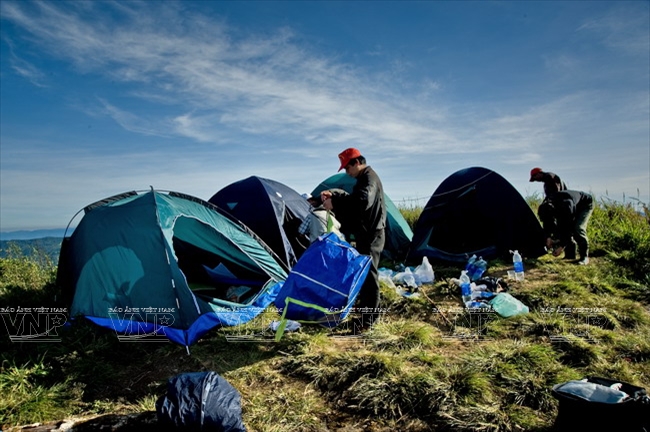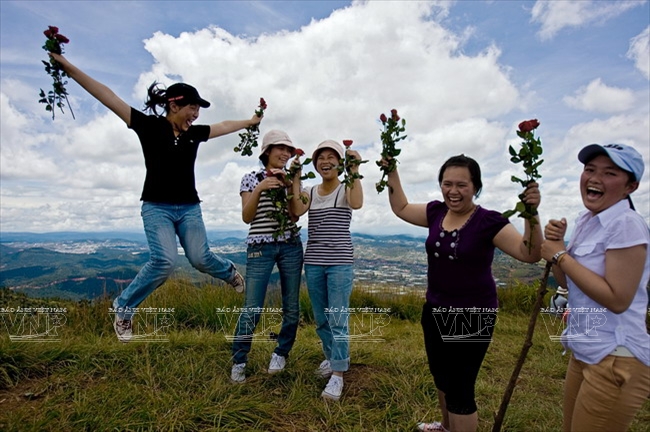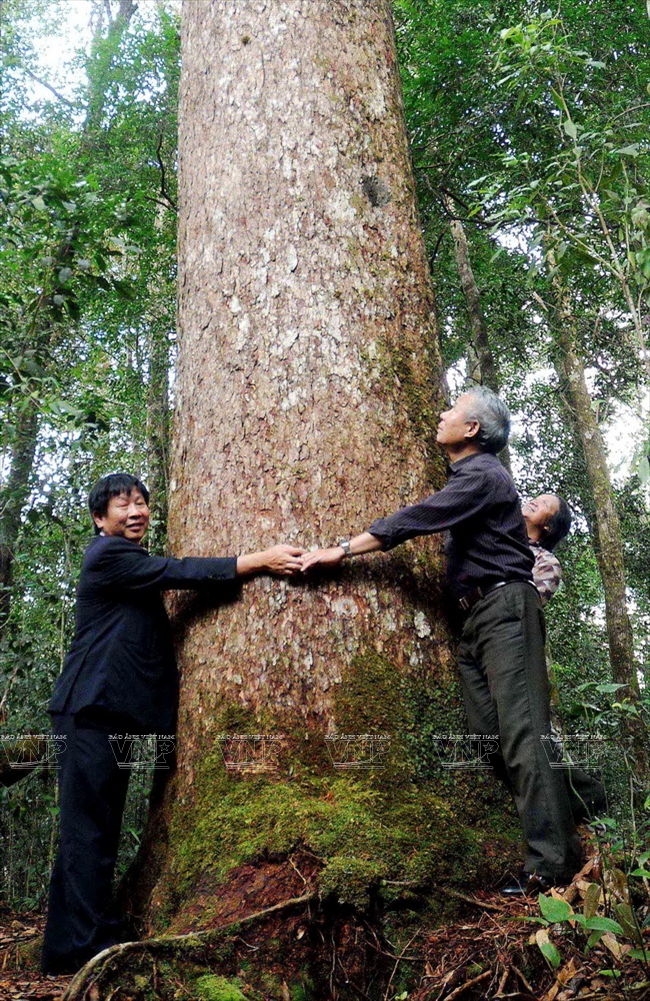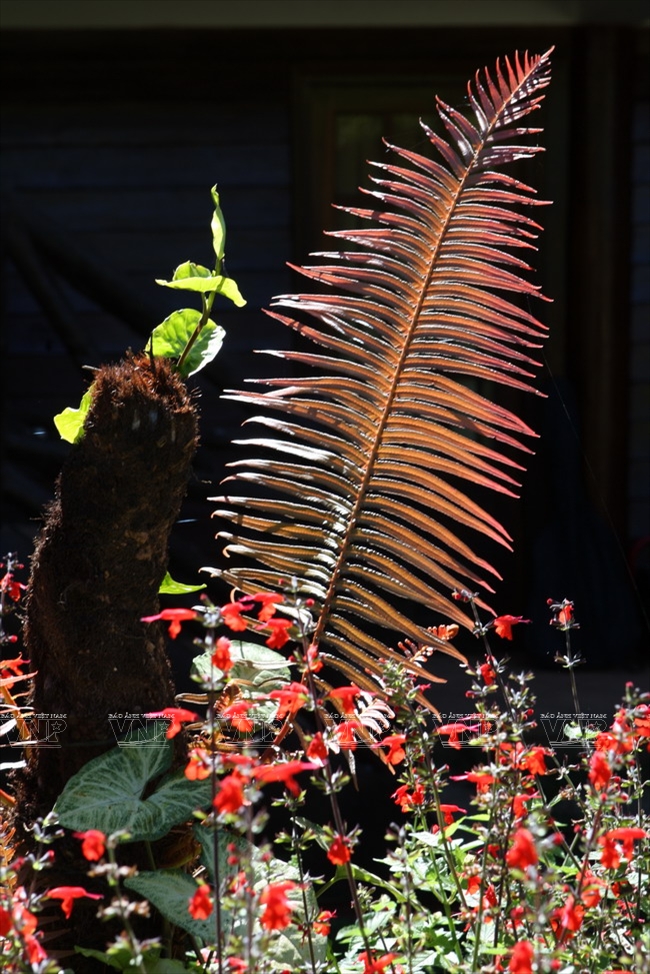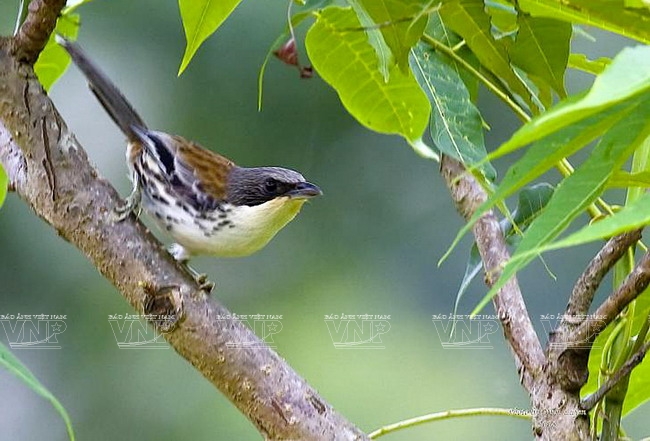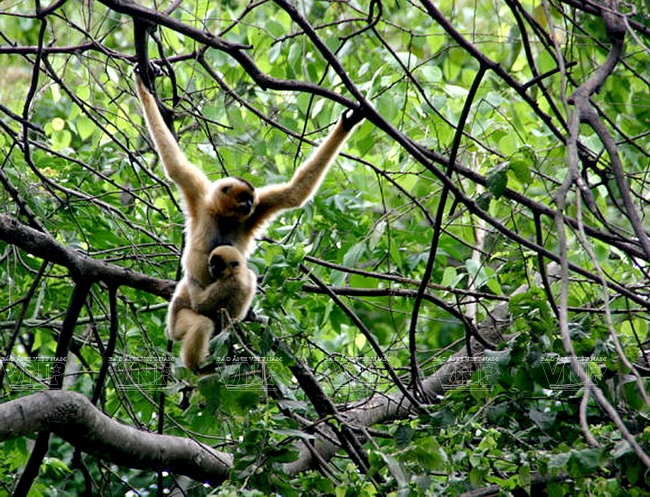Visiting Da Lat, we were told by the ethnic K’ho people who are living in the Central Highlands Lam Dong Province about the legend of Lang Biang Mountain. The legend goes that Lang, a son of the Lat tribe’s chief, fell in love with Biang, a daughter of the Chil tribe’s chief. Because they were from different tribes, they were not allowed to become husband and wife. The couple decided to die together to show their love for each other, and their opposition to the tough traditional ritual.
After their death, the two fathers were so regretful that they decided to reunite different tribes, including the Lat, Chil and Sre into the K’ho group. The high mountain in the upper La Ngu hamlet, where the young couple died, was named Lang Biang in memory of their loyal love.
The local people said the legend is considered a Vietnamese love story similar to that of Romeo and Juliet, and after listening to it we decided to go to the top of Lang Biang Mountain that now belongs to UNESCO’s biosphere reserve network.
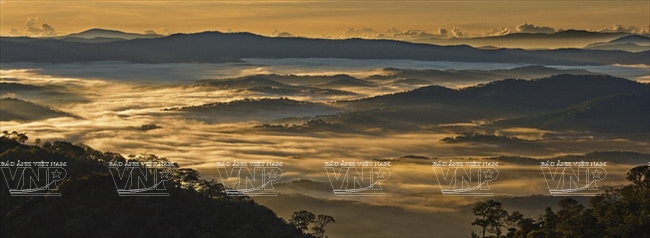 A sea of clouds at sunset seen from Lang Biang Mountain at the height of 2,169m. Photo: VNP’s file  The city of Da Lat seen from the height of 1,950m. Photo: Tat Son/VNP |
Climbing Lang Biang Mountain
|
Dưới chân núi Lang Biang là một thung lũng khá lớn, gọi là thung lũng Trăm Năm, được thiết kế như một khu du lịch sinh thái. Tại đây, du khách có thể cắm trại qua đêm, quây quần bên ánh lửa với ché rượu cần, thưởng thức những giai điệu Tây Nguyên và nhạc cụ cổ truyền của bà con dân tộc Lạch. There is a broad valley at the foot of Lang Biang Mountain called Tram Nam (A hundred years), which is designed as an eco-tourist park. Visitors can camp overnight, drink can wine by the campfire, and enjoy traditional songs of the Central Highlands performed by Lach ethnic people. |
We searched for information on tours to Lang Biang Mountain from the Internet and found that there are more than 50 travel companies who offer prices from 199,000 to 500,000 VND (roughly 9.5 to 24 dollars) per person. We took the package price of 500,000 VND for our trip which included transport, lunch, site visit tickets, and a tour guide.
From Da Lat, the bus went about 12km and stopped at the foot of Lang Biang Mountain. That’s the place where we started our trip to the three mountains that belong to Lang Biang global biosphere reserve. We had to hike a total of about 14km.
Of the three mountains, the two that were the most challenging stand at an altitude of 1,950m high and 2,169m high. To reach the 1,950m-high mountain, we had to trek along a narrow path in the pine forests from which we could see Dan Kia Lake with its clear water.
Almost at the top of that mountain, we turned right to hike along another path for about two hours in a primitive jungle towards the 2,169m mountain. Each step the cold of the jungle is absorbed deeper into our body. The higher we climbed, the narrower the path became. There were some obstacles on the way such as dried wood, large rocks, climbing plants and sinuous curves.
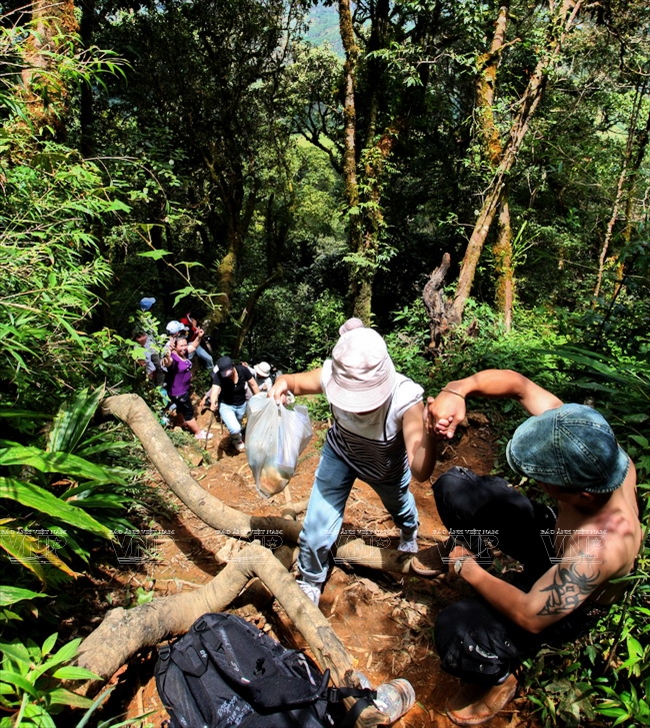 Going through primitive forests to climb Lang Biang Mountain. Photo: VNP’s file |
We reached the 2,169m mountain in late afternoon and could see with our own eyes “a banquet of a sunset” with a sea of clouds floating around the peak. From the top of Lang Biang Mountain, we could see a panoramic view of Da Lat, like a water-color painting with Dan Kia Lake and Golden Stream like a silky ribbon in the vast, green forests and mountains.
Lang Biang, an international research centre on tropical forests
Lang Biang Biosphere Reserve comprises a vast primitive jungle with the Bidoup-Nui Ba National Park at its core, which is classified as one of Vietnam’s four bio-diversity centres. Scientists have classified 153 species of animals and plants listed in Vietnam’s Red Book in 2007, and 154 species in the International Union for Conservation of Nature (IUCN) Red list in 2010. The World Wildlife Fund (WWF) also says that the reserve is among the Number-One zones for preservation (coded SA3 zone) in its program to protect the fauna living in Vietnam’s southern Truong Son Range.
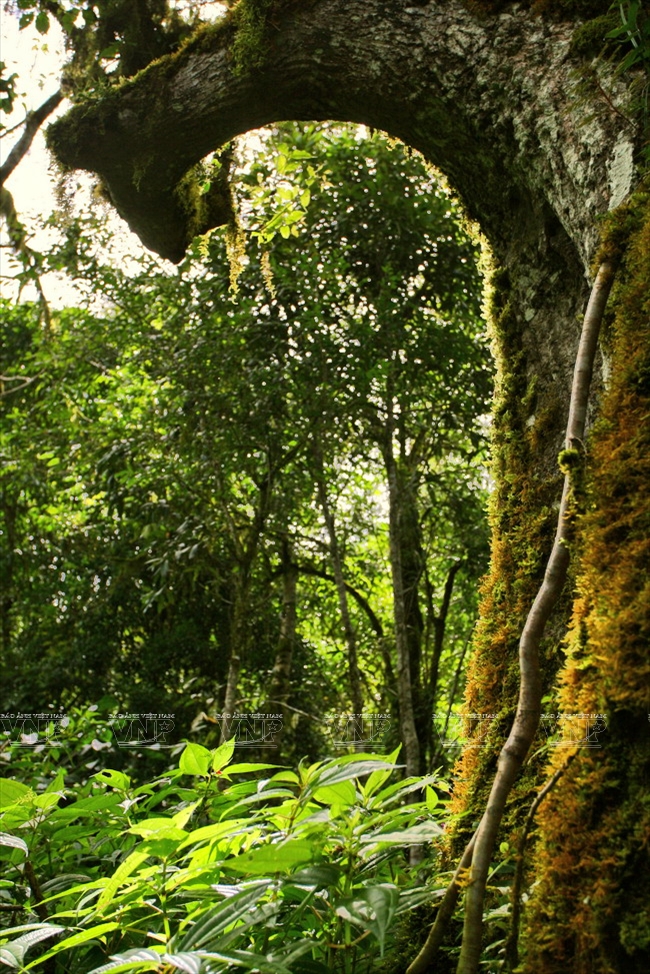 According to results conducted by experts, the Lang Biang Natural Reserve has 62 rare species of fauna and flora, including 29 species listed in the red list of Vietnam and IUCN. Photo: VNP’s file |
Lang Biang is home to a natural ecological system which provides a sustainable living income for the local people through the Vietnamese government’s program to pay for forest environmental services. There are more than 8,000 local households benefiting from this program through their contribution to protecting and preserving the reserve’s ecological values.
Lang Biang UNESCO-recognised Biosphere Reserve will work as a firm foundation for Lam Dong Province’s sustainable development through the exploitation of the combined values of the ecological services with a focus on developing tourism and related services. This will contribute to building and developing Da Lat to become a centre for tourism, training and scientific research on tropical forests.
Lang Biang is Vietnam’s 9th UNESCO-recognised Biosphere Reserve. The other eight reserves include Can Gio Mangrove Biosphere Reserve, Dong Nai Biosphere Reserve, Cat Ba Biosphere Reserve, the Red River Delta Biosphere Reserve, Kien Giang Biosphere Reserve, Western Nghe An Biosphere Reserve, Ca Mau Cape Biosphere Reserve, and Cu Lao Cham Biosphere Reserve.
Photos: Ha Huu Net & VNP’s Files

